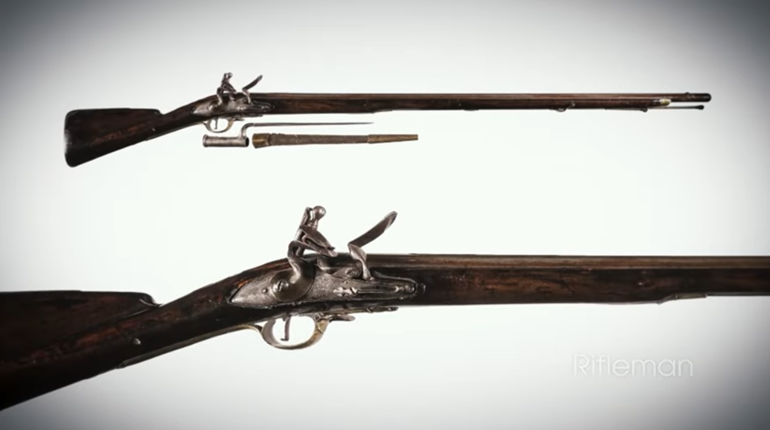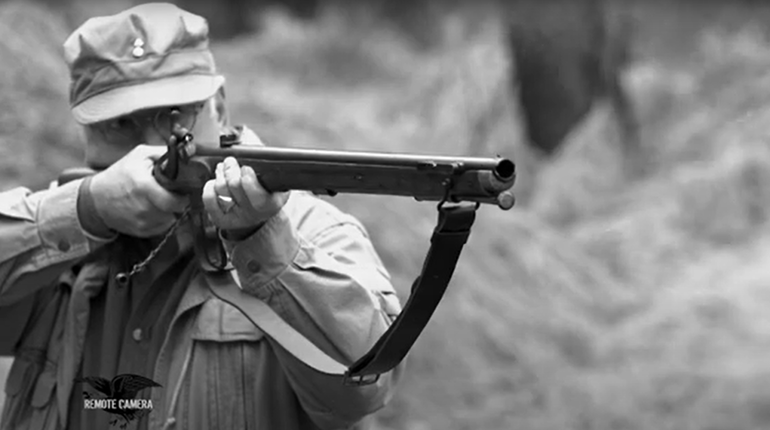
He was the most photographed American Indian of the 19th Century; the first of the 128 photos of him still known in existence taken by none other than Mathew Brady, the famous Civil War photographer. The year was 1870, and the occasion was the first visit of several that Red Cloud—an Oglala Lakota Sioux warrior and leader—would make to the White House to visit the president of the United States (and co-founder of the NRA), Ulysses S. Grant.
But the United States government, especially the Army, had not always been so enamored of Red Cloud. In fact, just a few years earlier, he was one of the most feared and hated Indian leaders on the Great Plains. From 1866 to 1868, a two-year period that would become known as Red Cloud’s War, he masterminded guerilla hit-and-run warfare raids on the U. S. Army as well as civilian wagon trains.
His goal was to prevent the Army from clearing the way for pioneers to enter and settle the Powder River Country, what one day would become northeast Wyoming and southern Montana. It was a huge area, land the Sioux considered sacred ground given them by the Great Spirit.
The major action of that war was the “Fetterman Fight,” when in December 1866 a combined force of some 2,000 Sioux, Cheyenne and Arapaho warriors, led by Red Cloud, surprised and completely annihilated 81 soldiers and officers led by Captain William Judd Fetterman. It was the worst defeat on the Great Plains of a U.S. Army detachment until a decade later when Lieutenant Colonel George Armstrong Custer and 267 of his men were wiped out at the Battle of the Little Bighorn—a battle in which Red Cloud did not participate.
But Red Cloud did not always prevail in battle. Like any warrior he had to learn his fighting skills over time, and on several occasions he was nearly killed doing so. For instance, a Pawnee arrow once passed completely through his body. Yet somehow Red Cloud miraculously recovered from that injury, as well as others. And each time he did, his reputation for ferocity, invincibility, cunning and just plain luck grew.
One of Red Cloud’s narrow escapes happened during a raid on an enemy Indian tribe, the Arikara. It is difficult to overemphasize the importance of horses to the various tribes living on the Great Plains. The horse not only provided transportation, allowing tribes to travel and hunt buffalo over hundreds of miles of territory, but horses were also a symbol of status and wealth. The more horses a warrior could accumulate, the more his standing grew within the tribe.
Warriors acquired horses in traditional Plains Indian style—they stole them. Raiding the herds of enemy tribes had been practiced since horses first arrived in North America, and when white armies and settlers began showing up on the plains their horses became fair game, as well.
So it was that a small band of Sioux warriors, led by Red Cloud, set out to grab as many horses as possible from the Arikara. But slithering up to the edge of the Indian village on their bellies, they identified the inhabitants not as Arikara but, rather, Gros Ventres (pronounced "Grow vaunt," meaning "big bellies" in French).
No matter. The Gros Ventres were Sioux enemies, too, so even though Red Cloud and his raiders were outnumbered nearly two to one, they figured with surprise on their side the large herd of horses pasturing nearby would be easy pickings.
The Gros Ventres had other ideas. Putting up more of a fight than expected, the Sioux were only able to cut about 100 head from the herd before fleeing. And it cost the raiding party more than they had bargained; three men were slightly injured but one warrior was killed.
Ever the leader, Red Cloud was not discouraged. Splitting his party, he ordered the three injured men and seven others to head home with the stolen horses; the remaining 13 warriors would follow him to their original target, the Arikara camp.
Unlike most other western tribes, the Arikara penned their ponies in a large corral of interwoven sagebrush near their village each night. It was Red Cloud’s plan to slip into the corral after dark, quickly tear an opening in the sagebrush, and stampede the horses.
He waited until midnight to lead his warriors silently on foot toward the corral and got within a short distance of it when two rows of Arikara, one on either side of the Sioux column, rose from tall grass and began firing at them with rifles and bows and arrows. Red Cloud realized immediately that the Arikara had been tipped to the Sioux raiding party’s presence in the area by the Gros Ventres.
During the battle, Red Cloud and one of his warriors managed to make it into the corral, but there was no further thought of stealing horses. Now it was a matter of survival, every man for himself. Red Cloud was able to stay out of sight of the Arikara by mingling with the horses. And as the sound of the fight moved away from him, he worked his way to the corner of the corral closest to the village, threw his blanket over his head and walked boldly down the middle of the village, hoping to not be recognized in the dark.
He passed several men with weapons, and one woman even spoke to him in the Arikara tongue, which he did not understand. Red Cloud simply grunted in reply and kept walking. Eventually arriving at the river that ran beside the village, he launched a nearby bull boat, jumped in and quickly pushed off from shore, allowing the current to carry him out of harm’s way.
Thinking his entire raiding party had been killed, Red Cloud spent the next four days drifting downstream at night and sleeping in thick brush along the riverbank during the day so as not to be seen. Eventually hearing drum beats one evening, he pulled the boat ashore and crept to the edge of an Indian village. Listening to the voices he recognized the language, and stepped from the shadows into the firelight.
The village inhabitants were members of the Brule band of Sioux. Red Cloud’s father had been a Brule, and he was welcomed and honored as a hero; the men, women and children of the village incredulous that they had the tremendous good fortune of the famous Red Cloud paying them a visit literally out of the dark.
As a result, this story was told over and over around campfires for years and the Red Cloud legend continued to grow. Eventually returning to his own village, he learned that seven of his fellow warriors had survived the botched Arikara raid and made it home safely. That meant six others had not.
As competent, resourceful and fearless a warrior as Red Cloud was, his greatest skill lay in his ability as a leader, to convince various tribes—both friend and foe—to work together in fighting the white man. It was a feat not easily accomplished, as tribal chieftains were often an independent-thinking, cantankerous lot.
But even Red Cloud eventually realized the futility of continuing to fight. Following his visit to Washington D.C., where President Grant made sure Red Cloud and his entourage toured the War Department’s arsenal and saw the total might of the United States military, he (Red Cloud) said of his own diminishing numbers of Sioux and other plains tribes, “Now we are melting like snow on the hillside, while you are growing like spring grass.” Another warrior, still militant, said of him, “Red Cloud saw too much.”
A contemporary of both Sitting Bull and Crazy Horse, Red Cloud was one of the greatest and most important Oglala Lakota Sioux leaders in American history. In 1872, he laid down his weapons for a final time and moved onto what is today known as the Pine Ridge Reservation in South Dakota. Red Cloud died peacefully there in his sleep at the age of 88, his wife of 59 years, Pretty Owl, at his bedside.
If you’d like to read more about the life of Red Cloud, the following book, a New York Times bestseller, written by co-authors Bob Drury and Tom Clavin, is highly recommended, The Heart of Everything that Is: The Untold Story of Red Cloud, An American Legend.





































